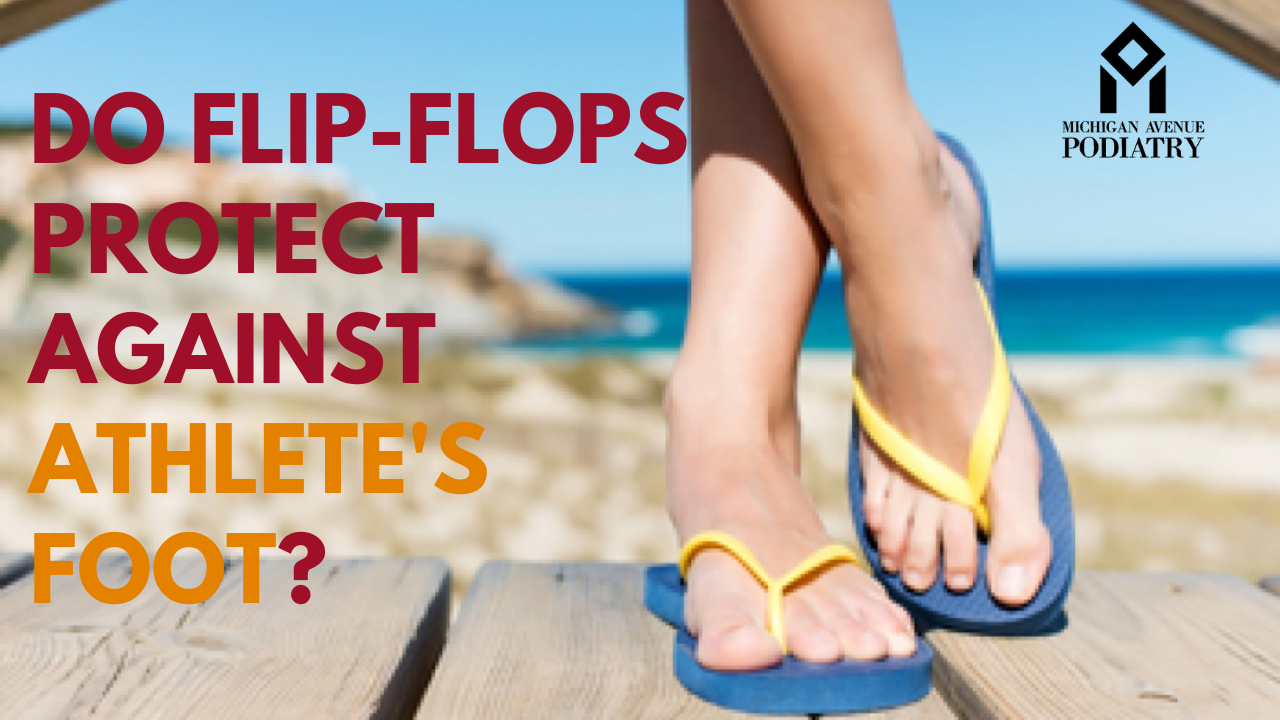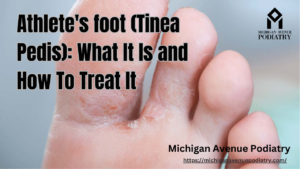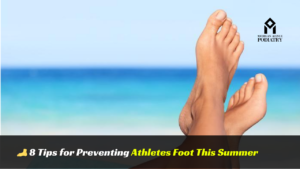Flip-flops are a popular choice of footwear, especially during the warmer months when people seek comfort and breathability for their feet. However, when it comes to protecting against athletes foot, a common fungal infection of the skin on the feet, flip-flops may not be as effective as many believe. In this informative blog post, we’ll explore the relationship between flip-flops and athlete’s foot, the factors contributing to its spread, and how to prevent and treat this uncomfortable condition with advice from podiatrists.
Understanding Athlete’s Foot:
Athletes foot, medically known as tinea pedis, is a fungal infection caused by various types of fungi known as dermatophytes. These fungi thrive in warm, moist environments, making the feet an ideal breeding ground, especially when enclosed in tight-fitting shoes or socks for prolonged periods. Common symptoms of athlete’s foot include itching, burning, redness, scaling, and cracking of the skin, particularly between the toes.
What Causes Athlete’s Foot?
Several factors contribute to the development of athlete’s foot, including:
- Warm and humid environments: Fungi responsible for athlete’s foot thrive in warm, moist conditions, such as those found in communal showers, swimming pools, and locker rooms.
- Direct contact: Athlete’s foot is highly contagious and can spread through direct contact with infected skin or contaminated surfaces, including towels, socks, and shoes.
- Wearing tight, closed-toe shoes: Shoes that trap moisture and restrict airflow create an ideal environment for fungal growth, increasing the risk of athlete’s foot.
- Weakened immune system: Individuals with compromised immune systems, diabetes, or certain medical conditions are more susceptible to fungal infections such as athlete’s foot.
Also Read
Do Flip-Flops Protect Against Athlete’s Foot?
While flip-flops may offer some protection against an athlete’s foot compared to closed-toe shoes, they are not foolproof. Here’s why:
- Limited coverage: Flip-flops provide minimal coverage and protection for the feet, leaving large areas exposed to the environment. This exposes the feet to potential contact with contaminated surfaces, increasing the risk of fungal transmission.
- Moisture retention: Although flip-flops allow for increased airflow, they do not effectively wick away moisture from the feet. Prolonged exposure to moisture, especially in humid environments, can create an ideal breeding ground for fungi, contributing to the development of athlete’s foot.
- Risk in communal areas: While flip-flops may offer protection in certain environments, such as public pools or showers, they may not fully protect against athlete’s foot when walking on contaminated surfaces outside these areas.
Prevention and Treatment of Athlete’s Foot:
To prevent athlete’s foot and reduce the risk of fungal transmission, consider the following tips:
- Proper foot hygiene: Wash and thoroughly dry your feet daily, paying attention to the spaces between the toes where fungi thrive. Use antifungal soap or powder to keep the feet clean and dry.
- Wear moisture-wicking socks: Choose socks made of moisture-wicking materials, such as cotton or moisture-wicking synthetic blends, to keep your feet dry and reduce the risk of fungal growth.
- Avoid sharing personal items: Do not share towels, socks, shoes, or other personal items with others, as this can facilitate the spread of athlete’s foot and other fungal infections.
- Rotate footwear: Alternate between different pairs of shoes to allow them to dry fully between wears, reducing moisture buildup and fungal growth.
- Choose appropriate footwear: Opt for shoes that provide adequate support and protection for your feet, especially when engaging in activities that involve prolonged exposure to moisture or communal areas.
If you suspect you have athlete’s foot or are experiencing symptoms such as itching, burning, or redness of the skin, consult with a podiatrist or foot doctor for proper diagnosis and treatment. Treatment for athlete’s foot may include topical antifungal medications, oral antifungal medications for severe cases, and lifestyle modifications to prevent recurrence.
Conclusion:
While flip-flops may offer some protection against athlete’s foot compared to closed-toe shoes, they are not a foolproof solution. To reduce the risk of athlete’s foot and fungal transmission, practice proper foot hygiene, wear moisture-wicking socks, and avoid sharing personal items with others. If you develop symptoms of athlete’s foot, seek prompt treatment from a podiatrist to prevent further complications and promote healing. By taking proactive measures and staying informed, you can protect your feet and enjoy a healthy, active lifestyle free from the discomfort of athlete’s foot.



